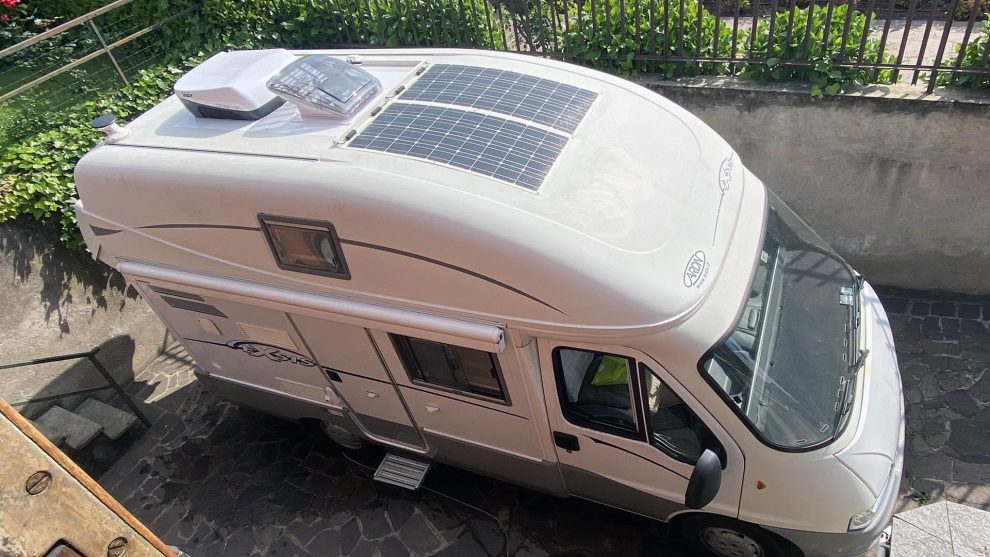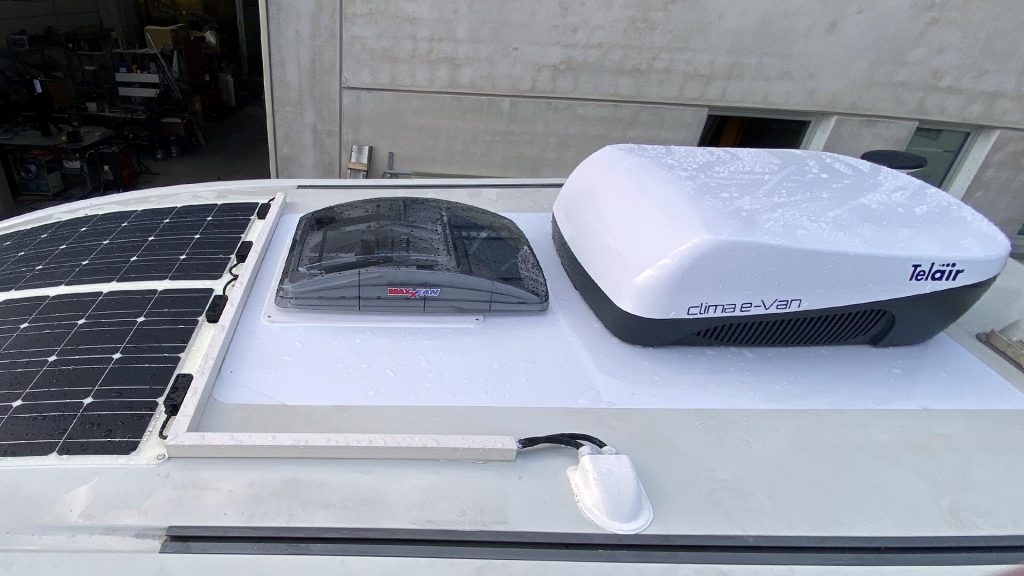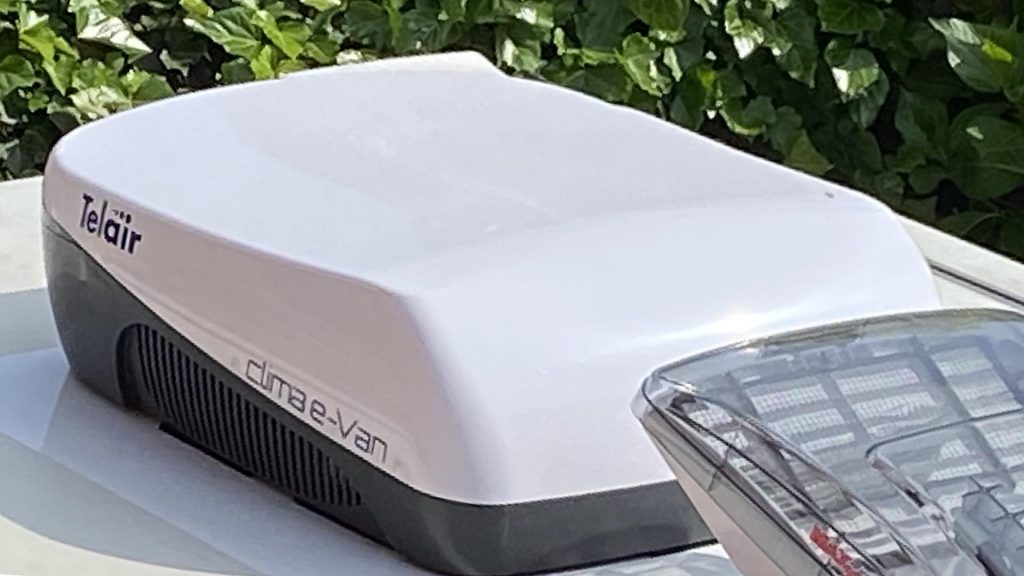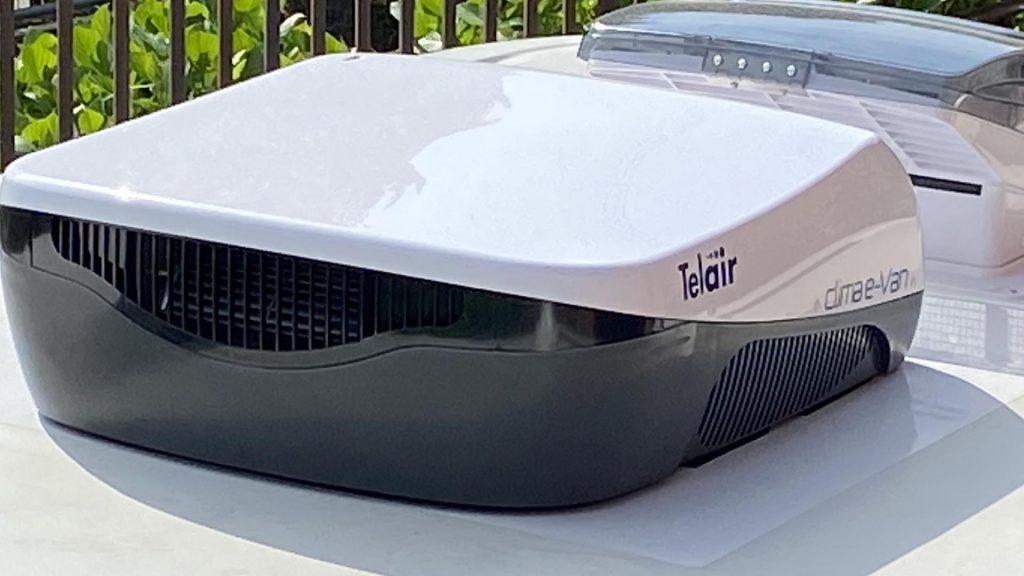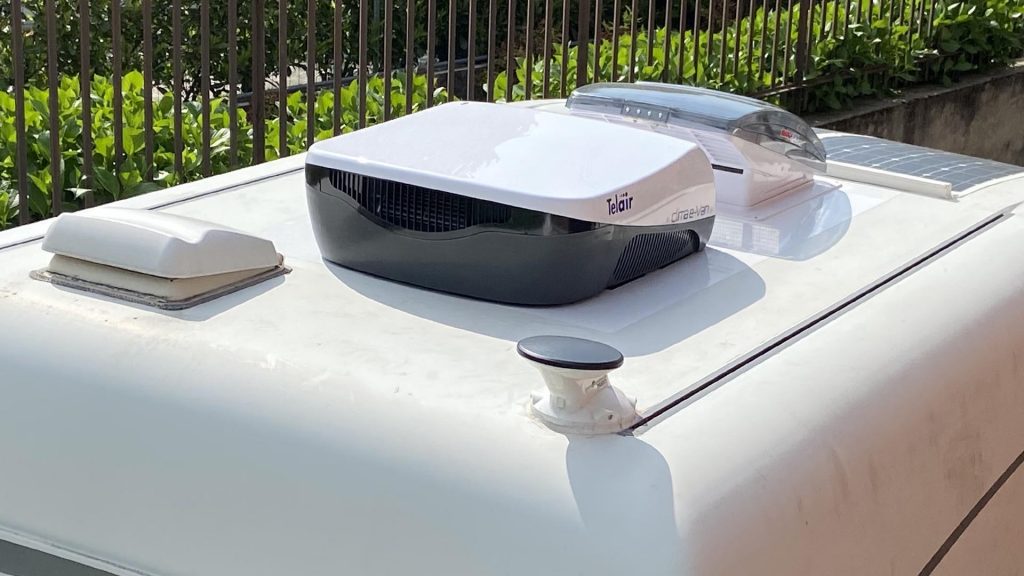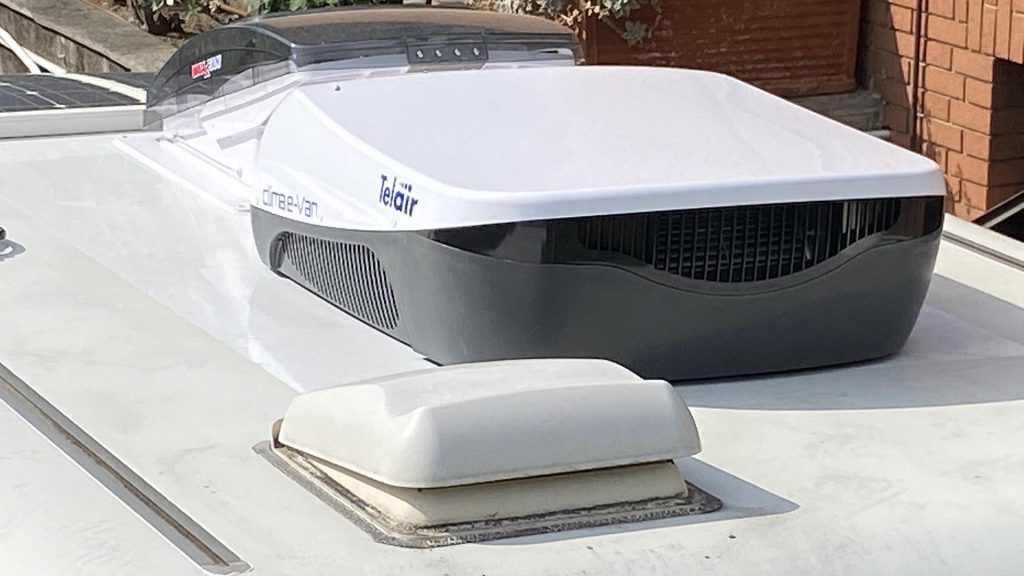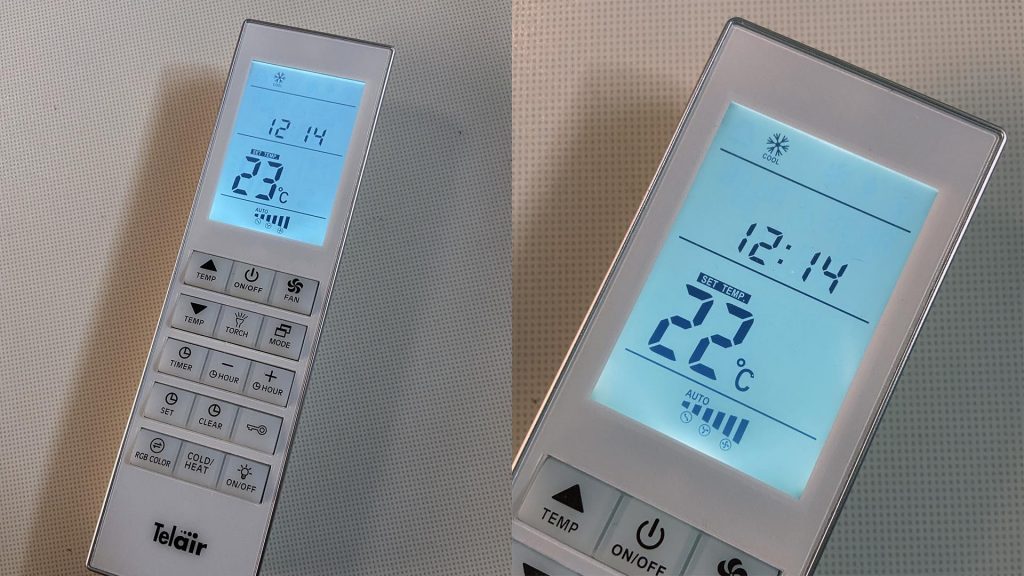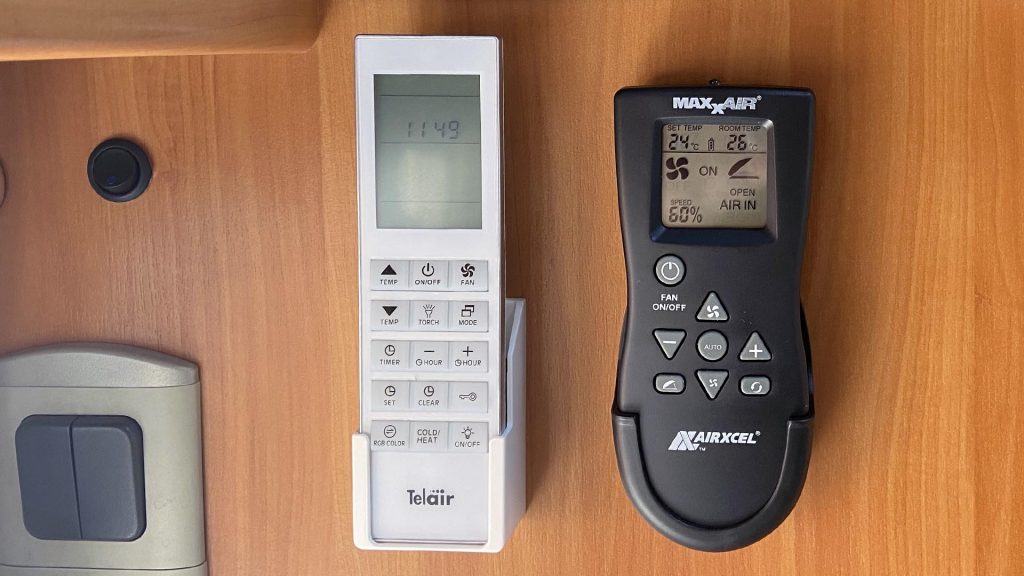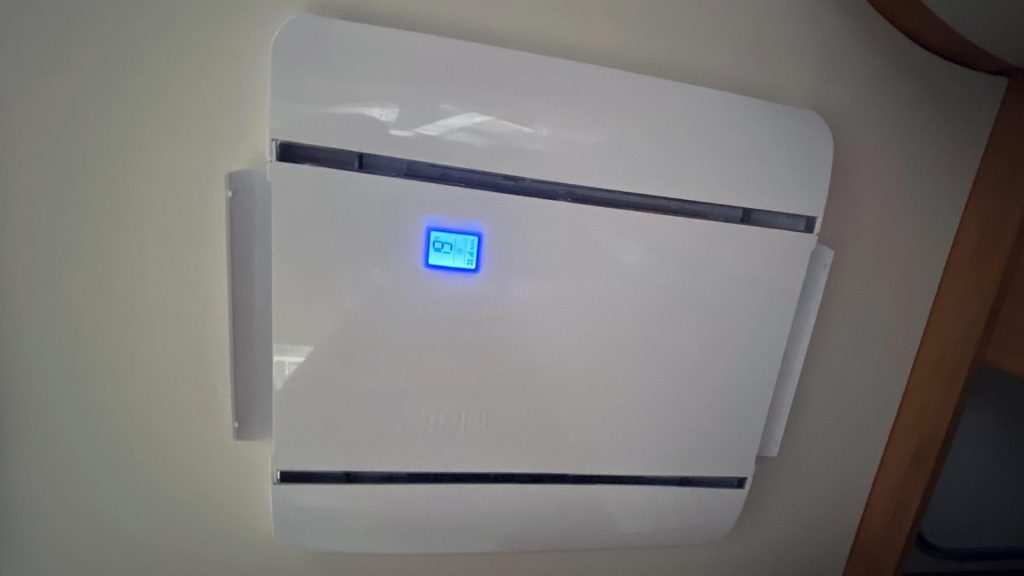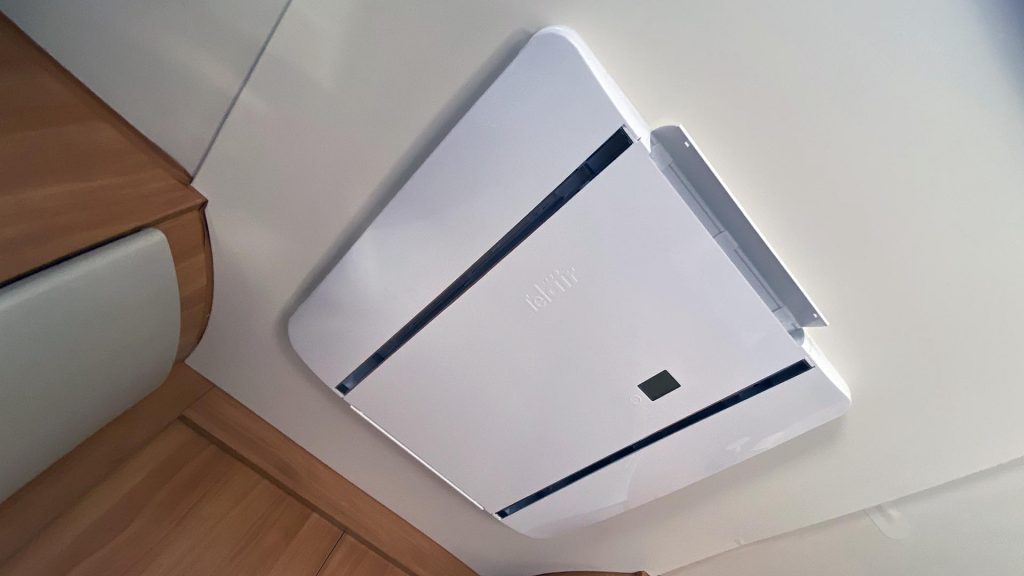PROS
- Low consumption
- Elegant aesthetics
- Possibility of programming
- Practical and intuitive remote control
CONS
- There are no controls on the main unit

Suggested retail price: €1,999.00
June 20, 2021 – The so-called “spring autumn” is finally gone and within a few days it has given way to decidedly more summer temperatures. In about two weeks here in Lombardy we went from wearing sweatshirts to Bermuda shorts and our body reacted with pain. However, this allowed us to start testing one of the products we recently installed on Falkor: the Telair clima e-Van 5400H air conditioner.
Developed last year with the aim of offering an optimal product for use on camper vans, this Teleco system also seemed suitable for our Falkor, which as you know is only 545 centimeters long. We talked about the installation, along with other components, in another article, because to make it fit on our vehicle we had to remove the original Hymer maxi-skyroof and rebuild a portion of the roof.
The clima e-Van stand out from other air conditioners on the market for their slightly more compact dimensions, both inside and outside, and for their low weight. We are talking about a “length” (from the front to the back) of less than 71 centimeters, with a weight of 30 kilograms. Teleco has paid great attention to the study of the internal diffuser, especially by imagining an installation on camper vans, which, compared to semi-integrated models, have a narrower central corridor and sometimes the bathroom door or the doors of the wall units that can interfere. Thu,s the design sees an overall height of 4.2 centimeters, but with the two sides that go down to less than 2 centimeters. The danger of interference with the furniture is thus averted.
For the winter, the heat pump
Another gift of the clima e-Van is to have a heat pump, which allows you to use the system even in winter for heating. This feature, we anticipate it immediately, we have not tried it yet: we will talk about it again when the temperatures are more compatible! There are two models to choose from: the 5400H and the 7400H. Aesthetically and in terms of size they are identical (the second weighs a kilo more), but what differentiates them are the power and obviously the consumption. The smaller model reaches 5,800 BTU (1.7 kW) in cooling and 5,600 BTU (1.65 kW) in heating, while the more “performing” model reaches up to 7,200 BTU (2.1 kW) and 6,800 BTU respectively (2 kW). The average current draw is 2.6 amps for the first and 4.0 amps for the second (at 220 volts, of course), with a power consumption of 600 and 920 watts respectively.
Teleco recommends the 5400H for vehicles up to six meters and the 7400H for vehicles up to seven meters. The smallest, according to the company, could be powered on the go by a pure sine wave inverter of at least 1,500 Watts, while for the second it is better to resign oneself to use it when parked.
Reduces temperature and humidity
Having said that, let’s come to our direct experience. In recent days we have been forced to sit still for work reasons and our Falkor stays in the sun more or less from 8 in the morning to 3 in the afternoon. The outside air temperature has exceeded 31 degrees several times. You can well imagine that inside the vehicle these conditions lead, even with the windows open, to exceed 35/37 degrees: a level not compatible with the possibility of working peacefully. Thus, the clima e-Van comes into operation after breakfast and continues to go until the evening. The result is that internally we recorded between 23 and 26 degrees: a very pleasant temperature, with a humidity rate that is around 40/42 percent.
In short, the result seemed convincing to us. We are left with the doubt as to when it will be even hotter, because the impression we had in the hottest moments is that the 5400H model may be a little underpowered compared to our van: it is true that the length is limited, but the height Falkor’s interior is 230 centimeters, compared to 190 for a standard van, and therefore the cubic meters of air to be treated are more. When choosing, our advice is to let the installer help you identify the most suitable model for your vehicle. Our opinion is that the 5400H is an optimal solution for 541-centimeter camper vans, but already going up to 6 meters it might be worth evaluating the 7400H.
The control center is in the remote control
From the point of view of use, the clima e-Van has a practical remote control, very intuitive to use: just set the desired temperature and choose the fan speed from the 3 available or let the system do everything automatically. The timer allows you to set on and off times. An element that on some occasions can be useful is the presence on the remote control of a LED light. It remains on only by pressing and holding the relevant button, but to look for something in an emergency and in the dark it can help. When the remote control is not in use, it can be placed in a wall-mounted holder.
The air diffusers are very simple: they are located on the front and rear side and consist of an adjustable fin. No frills and great effectiveness! A backlit liquid crystal display shows the set temperature and the operating mode, while a touch key allows switching on and off (remember that you have to hold your finger for about three seconds: it is not enough to touch the button briefly). There are no other controls on the main unit. Two rows of blue LEDs, controllable from the remote control, allow instead to have a night light, for those who appreciate it (or need it).
It consumes little, but it is better not to think about batteries
We frankly like this proposal from Telair. When we are in free parking we look for the shade and use the skyroof with a fan and when we are in equipped areas we attach ourselves to the current. A priceless advantage of the 5400H version of the e-Van climate is that its low absorption never triggers the meter, so you don’t get into trouble as sometimes happens with more powerful products. Of course, when buying an air conditioner, you must be aware of its limits of use. Many think that it is enough to have an inverter and a solar panel to be able to use it without limits, but unfortunately this is not the case.
Installing an air conditioner and using it disconnected from the 220 Volt current is almost utopia: with the normal batteries of the motorhome (usually around 100 Ah, sometimes in double configuration) and the indispensable high-power inverter we could cool the vehicle for a few minutes before lead-acid batteries (AGM or Gel) collapse. In fact, an absorption of 2.6 amperes at 220 Volts translates (spannometrically, since in between there is also the consumption of the inverter to be taken into account) in about 50 amperes, a value that batteries with this technology are not able to deliver continuously without being damaged. And then it should be remembered that these accumulators should never be regularly discharged over 50% in order not to reduce their useful life and recharge capacity.
This is theoretically easier with lithium batteries, but the autonomy would be reduced to a few dozens of minutes, which is not enough time to cool a van that has remained in the sun and is in a hot environment. In fact, it must be taken into account that the amount of energy in a 100 Ah battery, compared to an absorption of 660 Watt, does not allow to power an air conditioner for a long time, also considering that in the first part it would always work at maximum power to lower the temperature.
Panicello panels, noisy generator
The solar panels, although performing, are not able to keep up with the recharging of the battery in real time: provided that the sun is full and incident in the right way, a 100-Watt panel could give you about 500 Wh in the arc of the whole day, certainly not in an hour. In short, if you are willing to put the costs for at least 200 Ah of lithium batteries on the plate and you have the space for 3 or 4 solar panels you can hope to use the air conditioner a little, but we believe that the cost/benefit ratio is not favorable.
The only solution that allows you to use an air conditioner without being connected to the network is to use a generator (Teleco recommends them for at least 2,200 Watt), but it must always be remembered that these devices, even if silenced, are always noisy and annoying, especially for who is nearby. They should therefore be used with fair, avoiding behaviors that can lead to conflict.
So, to conclude, the Telair clima e-Van 5400H proved to be an excellent product, capable of offering the right comfort even when the outside temperature rises beyond the limits of tolerability. Its cost is aligned to the type of product (on the market it is around €1,500/€1,600 plus assembly), the installation does not involve particular difficulties (it is put in place of a standard 40 by 40 cm skyroof or requires a 36 by 36 cm) and the ease of use makes it suitable even for those who are less familiar with technology. For us it is an excellent choice.
©2021 seimetri.it – If you want to leave a comment on this article, you can do it on our Facebook page











